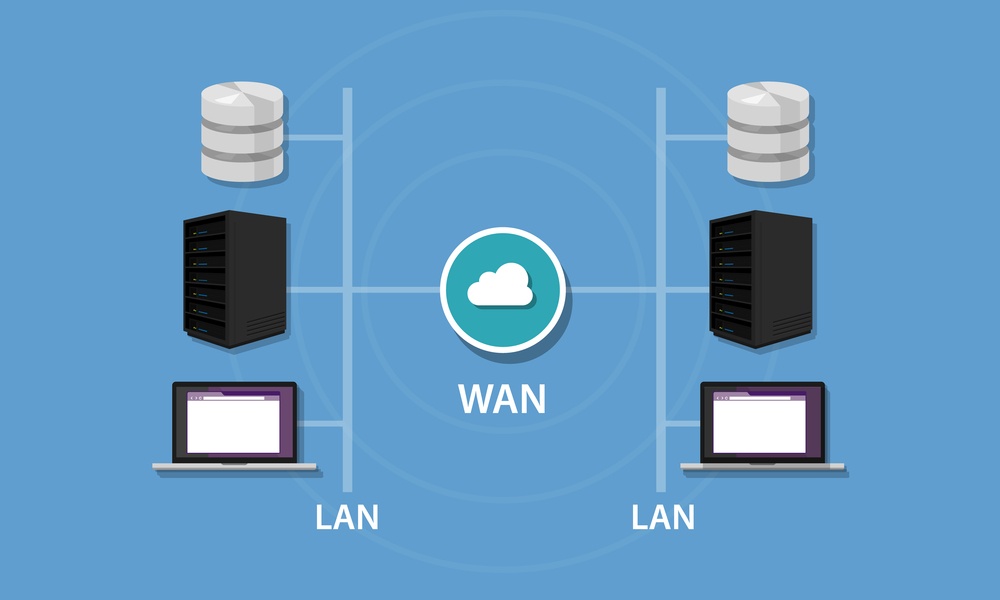In a traditional Wide Area Network (WAN) environment, users at remote locations are connected to applications hosted on Data Center servers. This typically meant dedicated MPLS circuits for both reliability and security.
In a cloud-based world, that’s just not efficient. It leads to poor user experience, especially for companies that are using multi-cloud services, Software as a Service (SaaS), or Infrastructure as a Service (IaaS) applications.
That’s where the SD-WAN (Software-defined Wide Area Network) comes into play.
Adoption of Software-defined Wide Area Network solutions has become mainstream. Nearly 40% (39.6%) of organizations currently use SD-WAN technology and another 38.3% say they plan to deploy it within the next year, according to an IDC survey. In total, 95% of enterprises report they expect to be using SD-WAN by mid-2021.
What Is SD-WAN?
You can think of SD-WAN as a virtual WAN architecture. It lets you use any combination of transport services to securely connect users across branches or remote locations. Because it “decouples” the network hardware from its control point, it can manage connections across any platform, connection, or cloud-based service.
It simplifies operations, management, and monitoring of network connections. SD-WAN allows you to control how traffic is directed and automatically enables optimization as performance conditions change. For example, traffic that is latency-sensitive, such as VoIP or Point of Sale (POS) services can be prioritized to make sure they have the throughput needed for efficient operations.
How Does SD-WAN Work?
Traditional WANs are not particularly efficient in cloud environments. Locations typically are required to backhaul all traffic to a central point apply security inspection. This applies even to traffic headed to the cloud. It can cause delays and hurt user experience.
SD-WAN avoids this backhaul by creating secure connections to support on-premise Data Centers, off-premise Data Centers, Public, Private, or Hybrid Clouds, and SaaS and IaaS services without diminishing performance.
The SD-WAN becomes a central control point to securely and intelligently direct traffic across the entire WAN. Security policies can be applied to all traffic.
Why Are Companies Adopting SD-WAN?
Moving to an SD-WAN has proven to be a better solution for the challenges of managing what’s become a complex IT infrastructure. It helps with improved performance and security of cloud-based app use while simplifying the management of the WAN infrastructure. CISOs, CIOs, and IT teams are finding SD-WAN deployment addresses these specific concerns:
- The complexity of interconnecting multiple transport types, such as MPLS, Internet, Ethernet, DSL, Leased Lines, 4G, and the coming rollout of 5G
- Maintaining security for Internet, Cloud Services, and Cloud-based applications, including multi-cloud and multiple third-party vendors
- Providing a consistent user experience for both on-premises enterprise apps and off-site cloud applications, such as SaaS and IaaS
The Benefits of SD-WAN
SD-WAN is a more cost-efficient way of delivering cloud services across the WAN. Some SD-WAN users have reduced WAN costs by more than 60%.
Here are some of the benefits of SD-WAN that organizations are realizing:
- Using broadband and fiber internet in place of MPLS VPN connections
- The ability to use multiple WAN providers to avoid vendor-lock and achieve cost-efficiency
- Reducing both CapEx and OpEx expenses
- Automate and simplify management of infrastructure and network monitoring
End to End Traffic Isolation
One key advantage of deploying an SD-WAN solution is that enterprise applications can be enabled on the WAN with segmentation. Mission-critical traffic and assets are partitioned to provide additional security to protect them against other areas that might be vulnerable.
SD-WAN can also leverage full-stack security solutions for more advanced security. This includes:
- Cloud Security and Firewalls
- Malware Protection
- URL Filtering
- Advanced Intrusion Prevention Systems (IPS)
Such a security full-stack allows for policy-based layer 3-7 protection for all traffic on the WAN.
Operational Simplicity
In an SD-WAN environment, provisioning of new locations can happen more quickly. Application policies can be applied individually to sites and segments. Traffic can be segmented and restricted with policies set at the enterprise level. This simplifies operations.
Many tasks can be automated which further reduces the operational complexity of typical WAN installations. For example, Cisco Meraki allows SD-WAN policies to be set up in just a few minutes. Secure connections to thousands of SD-WAN enables sites can be accomplished in just two clicks over any WAN link.
The network can be scaled more easily and at a lower operating cost. Traditional WANs don’t scale easily.
Network Monitoring
Network monitoring allows for better visibility of all connections across the SD-WAN using a single management interface. This lets you monitor everything on the WAN as a single deployment. You can quickly identify and pinpoint where performance lags across the Local Area Network (LAN), WAN, or servers.
